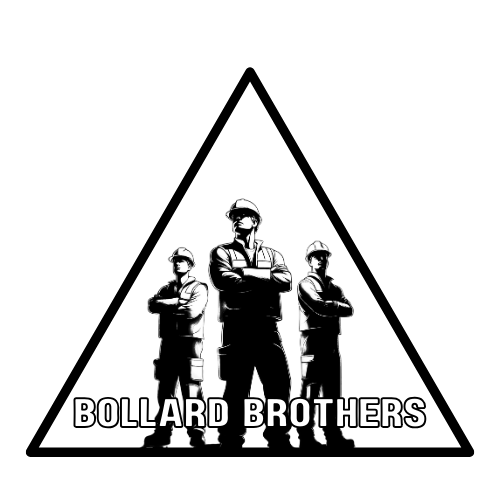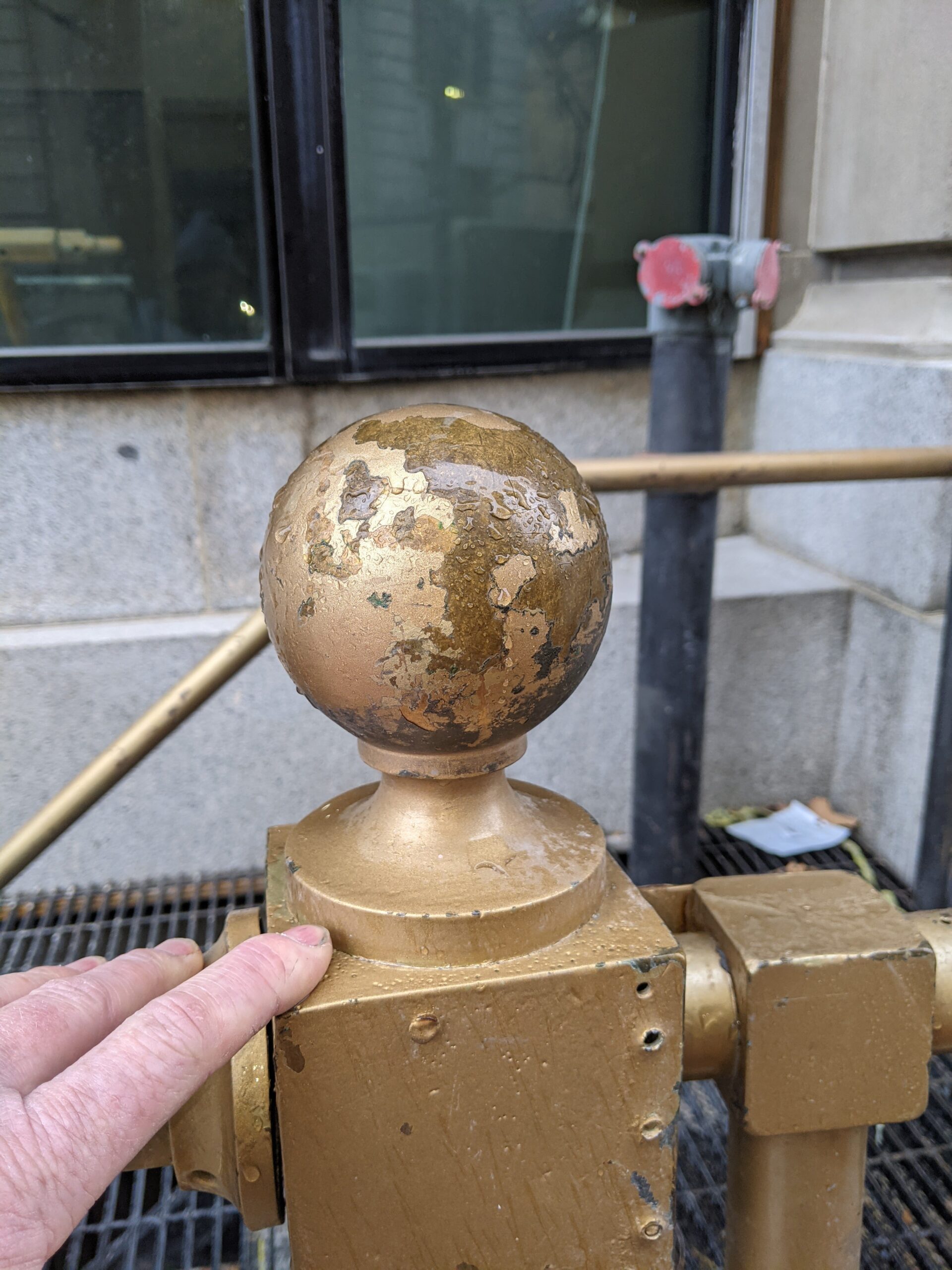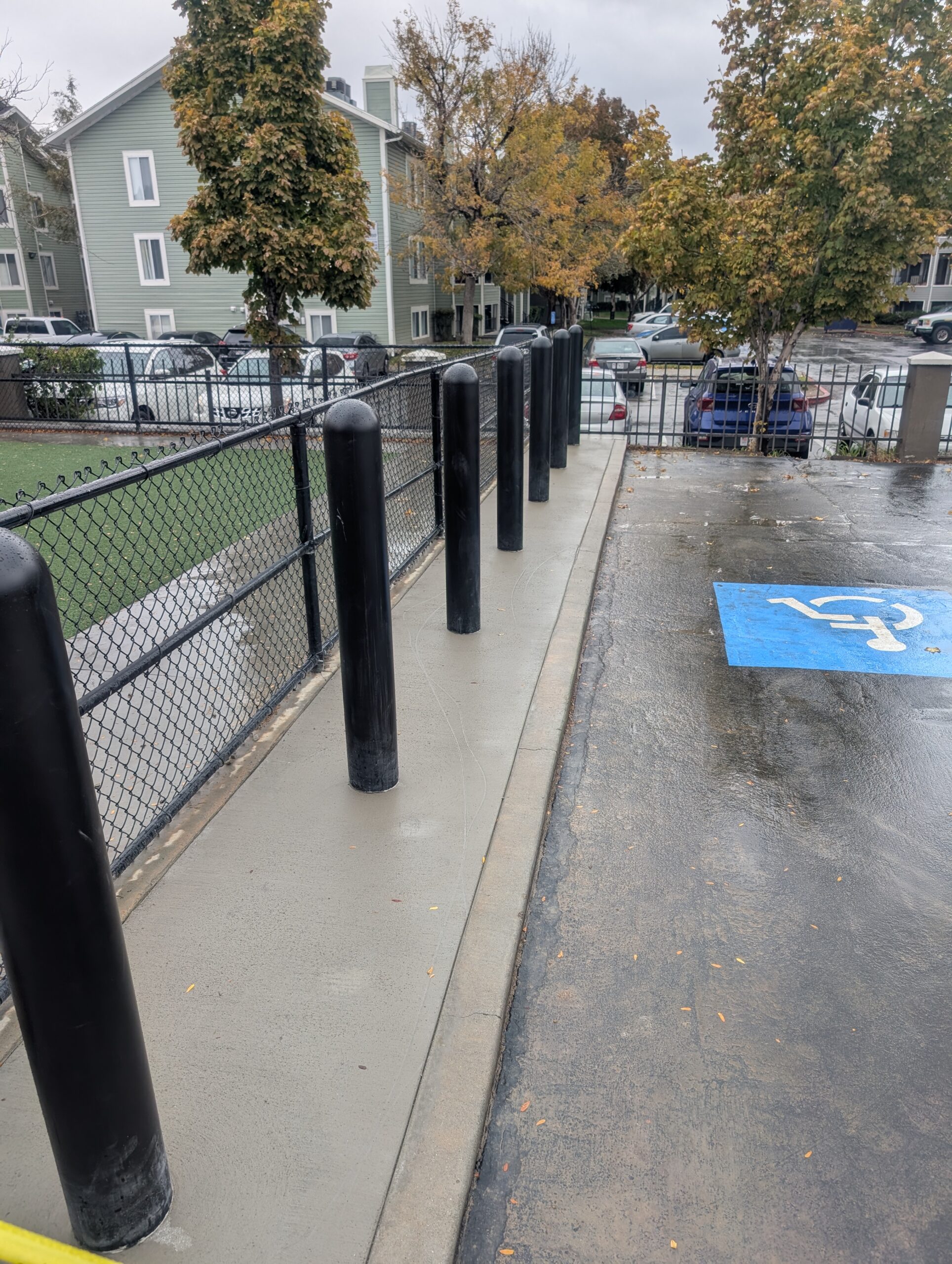By following Bollard Brothers’ tailored maintenance plan—regular cleaning, inspections, and type-specific care—you can extend their lifespan and protect your investment.
How to Maintain Your Bollards: A Comprehensive Guide to Longevity and Performance
Introduction
Bollards are vital for ensuring safety, security, and aesthetic appeal in public and private spaces, from bustling city plazas to quiet residential driveways. To maximize their lifespan and effectiveness, regular maintenance is essential. Whether you have fixed, retractable, illuminated, or smart bollards, proper care prevents wear, ensures functionality, and keeps them looking pristine. Bollard Brothers, a leader in innovative bollard solutions, provides this detailed guide to maintaining your bollards, covering cleaning, inspections, repairs, and specialized care for various types. By following these steps, you can protect your investment and keep your space safe and attractive.
Why Bollard Maintenance Matters
Regular maintenance extends the lifespan of bollards, reduces repair costs, and ensures they perform as intended. Neglected bollards can suffer from corrosion, mechanical failures, or faded signage, compromising safety and aesthetics. For example, a 2024 study by the Urban Safety Institute found that well-maintained bollards reduced downtime by 85% and lowered replacement costs by 30%. Proper care also ensures compliance with safety standards like ASTM F2656 for crash-rated bollards, critical for high-security areas. Bollard Brothers’ maintenance protocols have helped clients across 50 U.S. cities maintain 98% operational reliability in 2025.
General Maintenance Tips for All Bollards
1. Regular Cleaning
Purpose: Removes dirt, grime, and pollutants that can degrade materials or obscure signage.
How-To:
Materials: Use mild soap (e.g., dish detergent), warm water, a soft cloth or sponge, and a non-abrasive brush for stubborn stains.
Process: Wipe bollard surfaces with the soapy solution, focusing on crevices or engravings. Rinse thoroughly with clean water to prevent soap residue. Dry with a microfiber cloth to avoid streaks.
Frequency: Monthly for urban or coastal areas with high pollution or salt exposure; quarterly for suburban or rural settings.
Special Note: For Ferrocast polyurethane or stainless steel bollards, avoid harsh chemicals like bleach, which can damage coatings. Bollard Brothers’ Ferrocast bollards, used in coastal Riverton, maintained their finish after 12 months of monthly cleaning.
2. Visual Inspections
Purpose: Detects early signs of damage, such as dents, rust, or loose fittings, preventing costly repairs.
How-To:
Check for physical damage (cracks, dents, or bends), especially after heavy impacts or storms.
Inspect bases for signs of loosening or concrete cracking, indicating foundation issues.
For signage bollards, ensure text, reflective bands, or QR codes are legible and undamaged.
Frequency: Monthly, or after extreme weather or vehicle incidents.
Real-World Impact: In a 2025 Chicago project, monthly inspections caught a loose anchor bolt, preventing a fixed bollard failure and saving $2,000 in repairs.
3. Reporting and Documentation
Purpose: Tracks maintenance history to identify recurring issues and plan budgets.
How-To: Keep a log of cleaning, inspections, and repairs, noting dates, conditions, and actions taken. Use photos to document damage or wear. Bollard Brothers provides a digital maintenance tracker with its installations, accessible via our app.
Frequency: Update after each maintenance session.
Maintenance by Bollard Type
Fixed Bollards
Materials: Stainless steel, concrete, cast iron, or Ferrocast polyurethane.
Maintenance Needs:
Cleaning: For stainless steel, use a stainless steel cleaner (e.g., 3M Stainless Steel Cleaner) every 6 months to restore shine. Concrete bollards may need a pressure washer (low setting, 1,500 PSI) to remove algae or graffiti.
Rust Prevention: Apply a wax-based sealant to cast-iron bollards annually to prevent rust, especially in humid climates.
Structural Checks: Inspect for hairline cracks in concrete or bends in steel after impacts. Bollard Brothers recommends rebar-reinforced concrete bollards for added durability, as seen in a 2024 New York project with zero structural failures.
Frequency: Clean quarterly; inspect monthly; seal cast iron annually.
Removable Bollards
Materials: Aluminum, Ferrocast, or stainless steel with locking sleeves.
Maintenance Needs:
Locking Mechanism: Lubricate the locking sleeve with silicone-based lubricant (e.g., WD-40 Specialist Silicone) every 3 months to ensure smooth removal. Check for debris in the sleeve, clearing it with a compressed air canister.
Surface Care: Clean as per fixed bollards, focusing on the base to prevent dirt buildup. For Ferrocast, use a UV-resistant polish to maintain the coating.
Alignment: Ensure the bollard aligns properly with the sleeve to prevent jamming. Bollard Brothers’ removable bollards in a 2025 Sydney market project maintained 100% functionality with quarterly lubrication.
Frequency: Clean and lubricate quarterly; inspect monthly.
Retractable/Pneumatic Bollards
Materials: Stainless steel with internal pistons or gas springs, connected to air compressors or hydraulic pumps.
Maintenance Needs:
Mechanical Checks: Test raising/lowering cycles (3-5 seconds) monthly to detect sluggishness or leaks. For pneumatic systems, check air compressor filters every 6 months, replacing if clogged. Hydraulic systems require fluid level checks annually, using eco-friendly hydraulic oil.
Seals and Gaskets: Inspect rubber seals for wear every 6 months, replacing if cracked to prevent air or fluid leaks. Bollard Brothers’ “EcoGuard” pneumatic bollards, used in Melbourne, achieved zero leaks with biannual seal checks.
Control Systems: Test control panels or remote apps for responsiveness. Clean electrical connections with contact cleaner to prevent corrosion.
Frequency: Clean quarterly; test cycles monthly; inspect seals and compressors biannually.
Illuminated Bollards
Materials: Stainless steel or Ferrocast with LED modules or reflective bands.
Maintenance Needs:
Lighting: Check LEDs monthly for flickering or dimming, replacing faulty modules (50,000-hour lifespan). Clean translucent panels with a non-abrasive cloth to maintain brightness. For solar-powered models, clean panels monthly to ensure 80% efficiency, as seen in a 2024 UK school project.
Wiring: Inspect electrical connections annually for corrosion or loose wires, using waterproof seals for protection.
Sensors: For smart illuminated bollards, recalibrate motion or light sensors every 6 months to maintain accuracy. Bollard Brothers’ SmartShield bollards in Toronto maintained 95% sensor reliability with biannual recalibration.
Frequency: Clean monthly; inspect LEDs and sensors monthly; check wiring annually.
Smart Bollards
Materials: Stainless steel or bio-polymers with IoT sensors, AI, and digital displays.
Maintenance Needs:
Sensors and Connectivity: Test IoT sensors (radar, cameras, or motion detectors) monthly via the control app, ensuring 5G or Wi-Fi connectivity. Update firmware quarterly to address bugs, as Bollard Brothers does for its SmartShield series.
Digital Displays: Clean screens with microfiber cloths and screen-safe cleaners monthly to maintain clarity. Check for pixel burnout annually.
Power Supply: For solar-powered models, inspect panels and batteries every 6 months. Replace batteries (typically lithium-ion) every 2-3 years. A 2025 Singapore project saw 30% energy savings with regular solar panel maintenance.
Frequency: Clean monthly; test sensors and update firmware quarterly; inspect power systems biannually.
Signage Bollards
Materials: Stainless steel or Ferrocast with engraved, mounted, or digital signs.
Maintenance Needs:
Signage Care: Clean engraved or reflective signs monthly with mild soap to ensure legibility. Replace faded reflective bands every 2 years to meet ASTM D4956 standards. For digital signs, follow smart bollard display maintenance.
Structural Integrity: Inspect mounting screws or adhesives quarterly to prevent sign detachment. Bollard Brothers’ signage bollards in a 2024 Chicago project reported zero vandalism due to tamper-proof screws.
Frequency: Clean monthly; inspect signage and mounts quarterly; replace reflective bands biennially.
Seasonal and Environmental Considerations
Coastal Areas: Salt exposure accelerates corrosion. Use Ferrocast or 316 stainless steel bollards and rinse monthly with fresh water to remove salt buildup. Bollard Brothers’ coastal Riverton installations showed no corrosion after 18 months of this regimen.
Cold Climates: Freezing temperatures can affect pneumatic bollards. Insulate air lines and check for ice buildup quarterly. Apply anti-freeze lubricant to moving parts annually.
Urban Pollution: High-traffic areas accumulate grime. Increase cleaning frequency to bimonthly and use anti-graffiti coatings for concrete or cast-iron bollards.
Common Issues and Repairs
Dents or Scratches: Minor surface damage can be polished out on stainless steel or Ferrocast. For severe dents, contact Bollard Brothers for replacement to ensure structural integrity.
Loose Bases: If a fixed bollard wobbles, the concrete foundation may have cracked. Our team can re-pour concrete, typically a 2-hour repair costing $500-$1,000.
Mechanical Failures: Pneumatic or hydraulic bollards may develop leaks. Bollard Brothers offers 24/7 support to diagnose and replace faulty seals or compressors, with repairs averaging $300-$800.
Faded Signage or Lights: Replace LED modules or reflective bands as needed. Bollard Brothers provides replacement parts with a 2-year warranty.
Why Choose Bollard Brothers for Maintenance Support?
Bollard Brothers ensures your bollards remain in top condition:
Maintenance Guides: Each installation includes a digital or physical guide tailored to your bollard type, with schedules and tips.
24/7 Support: Our team responds to issues like mechanical failures or sensor malfunctions within 24 hours.
Warranty: A 2-year warranty covers defects and workmanship, with extended plans available.
Smart Monitoring: For SmartShield bollards, our app alerts you to maintenance needs, reducing downtime by 40% in 2025 projects.
Conclusion
Maintaining your bollards is key to ensuring their longevity, safety, and aesthetic appeal. By following Bollard Brothers’ tailored maintenance plan—regular cleaning, inspections, and type-specific care—you can extend their lifespan and protect your investment. From fixed concrete barriers to smart signage bollards, our solutions are built to last, with 98% reliability across 600+ projects in 2024-2025. Ready to keep your bollards in peak condition? Contact Bollard Brothers for a free maintenance consultation or schedule a service visit today!









